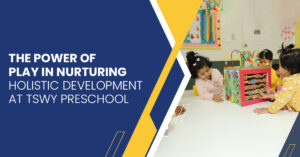A red pen is more than just a tool to CBSE and TSWY preschool educators: it marks the beginning of a progressive change still unfolding in Indian classrooms. Moving away from its once universal use as a signifier of correction, the red pen is being tossed away by more and more educators. This change goes beyond preschool and includes CBSE-affiliated schools, showcasing a dramatic shift in feedback systems used in early education.
It is safe to assume that almost everyone is familiar with the negative connotation associated with the red pen. However, its variant usage and the conflicting perceptions still await explanation, especially about its recent preschool embrace.
Table of Contents
- The Emotional Weight of Red
- TSWY’s Thoughtful Approach in Preschool Classrooms
- One Solid Positive: Ditching the Red Pen Builds Confidence and a Growth Mindset
- One Real Concern: Is the Red Pen Still Effective in Higher Grades?
- The Way Forward: Moving Beyond the Red Pen in Education
The Emotional Weight of Red
Ever since its inception, the color red has been associated with an alert, a sign of danger, and errors in judgment. Marking off exam scripts using red ink is a prime and blatant example of this. Kids associate dreadful emotions with the classroom. The use of red ink to provide feedback serves as a trigger to emotionally heavy reflexes. For preschoolers, a page overflowing with red markings feels more like criticism instead of constructive feedback.
Psychologists have pointed to the emotional interpretation of colour by young children. Red marks inspire feelings of distress, embarrassment, or displeasure, especially when coupled with mistakes. Therefore, several Indian schools and even those under the CBSE board have begun looking towards more compassionate methods of evaluation.
It is a well-known fact that CBSE has been promoting and supporting child-friendly, stress-free pedagogical practices, and a number of its affiliated schools have started using green, purple, or pink inks instead of red for marking work, especially in the lower grades.
TSWY’s Thoughtful Approach in Preschool Classrooms
At TSWY, a preschool franchise that places equal importance on emotional intelligence alongside cognitive skills, all preschool classrooms have stopped using red pens. Teachers now promote positive change in work through the use of gentle pastels, stamps, stickers, and even smiley faces, using positive reinforcement strategies.
“Correction should feel like support, not punishment,” the Academic Coordinator at TSWY states. “So instead of circling mistakes in red, we highlight what’s going well and suggest gently what can be better. We offer colour in a way that uplifts.”
To not make children consider guidance as failure, the school uses visuals and narratives to explain their feedback.
One Solid Positive: Ditching the Red Pen Builds Confidence and a Growth Mindset
Eliminating the use of red pens helps children see learning as a process rather than something to be performed. Children right away feel more at ease when warm and constructive feedback is provided. They become willing to try again and grateful to strive towards improvement, hence leaning towards a positive and growth-driven mindset. This is crucial, especially during preschool years, when their emotional framework is built.
Younger students seem to engage more in red-ink-free classrooms. As a result, TSWY Jasper has noted more willing participation in accurate, driven feedback, too!
One Real Concern: Is the Red Pen Still Effective in Higher Grades?
The red ink critique has also raised concerns about its visibility as a highlight, especially for older students who are expected to produce more intricate work. While this is a valid point, it holds little relevance for preschool-age children. Their learning is mostly hands-on, visually oriented, and guided. Moreover, CBSE guidelines for preschool make CCE (Continuous and Comprehensive Evaluation) the norm. This encourages advanced observation with little to no negative comments, thereby supporting this feedback approach.
The Way Forward: Moving Beyond the Red Pen in Education
From a big CBSE school to a caring preschool such as TSWY, one thing remains clear: no one should ever be afraid of learning. Therefore, delivering feedback to students with a generous dose of warmth and motivation not only builds confidence but can work wonders as a reliable self-esteem booster for children.
Similar to the more profound commitment to child-centred education, the shift from using red pens in marking to more civilised colours is a meaningful one. After all, in the early stages of development, every touchpoint can be transformative. Even something as seemingly trivial as ink colour can matter greatly.





